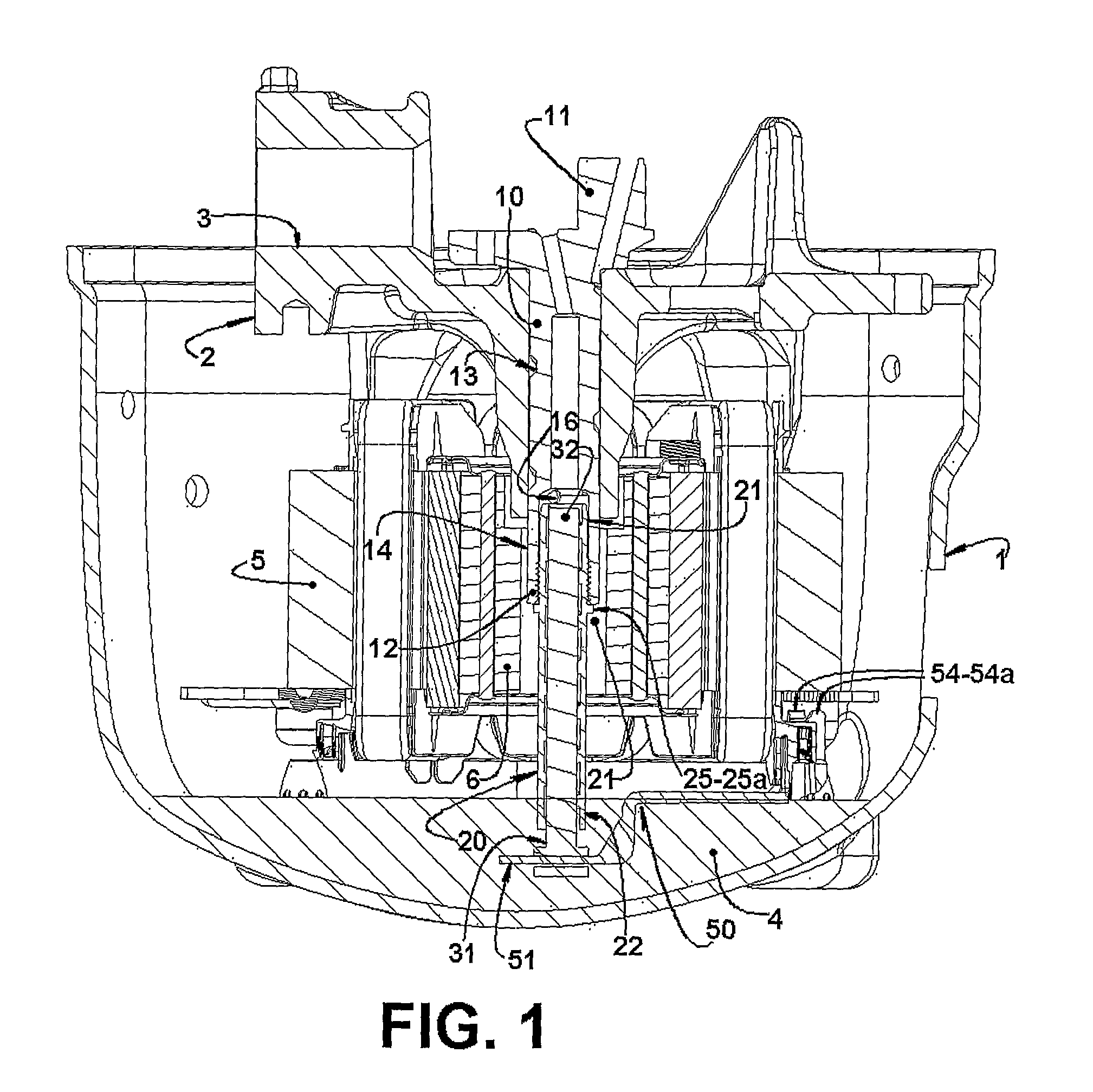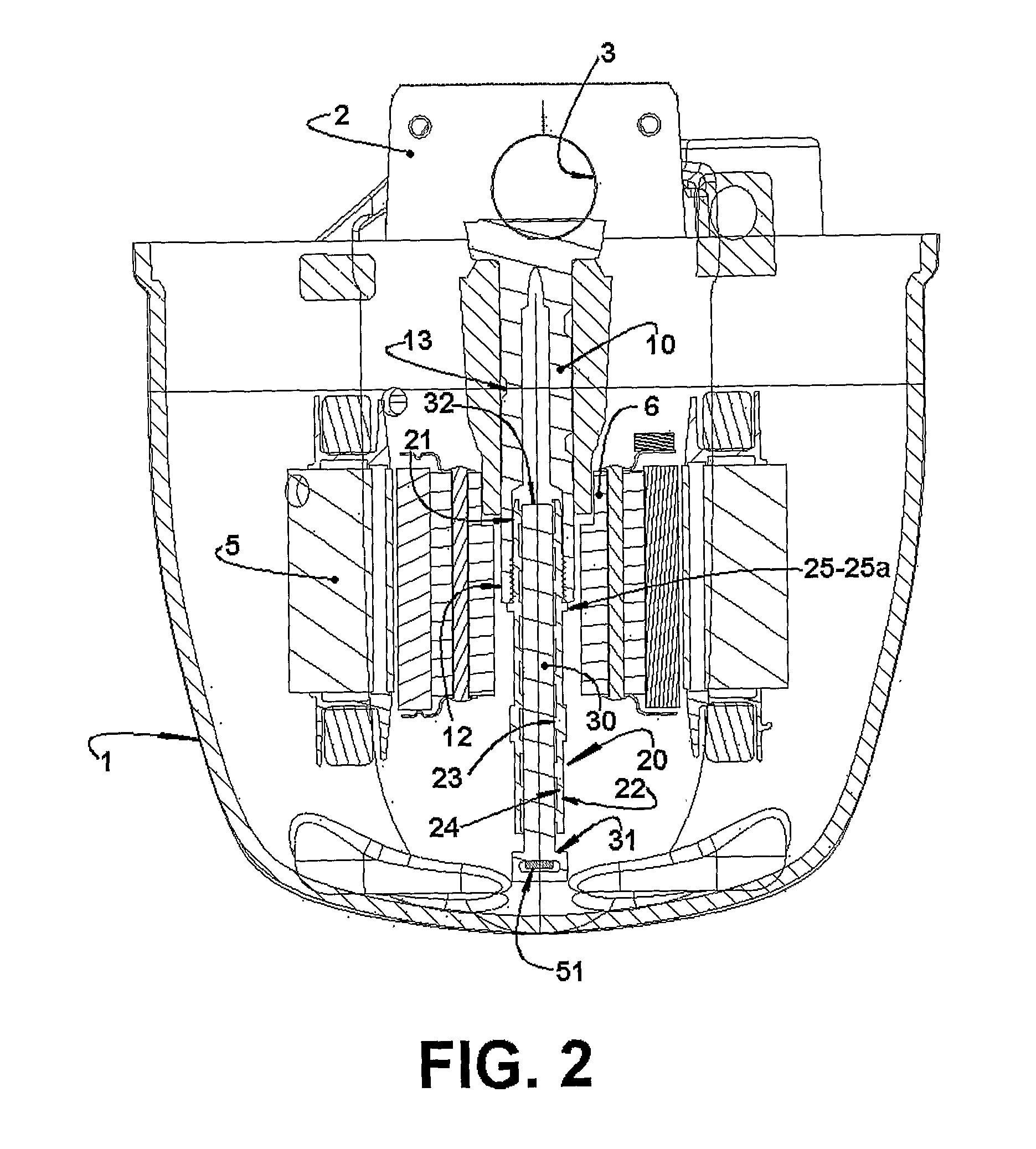Oil pump for a refrigerating compressor
- Summary
- Abstract
- Description
- Claims
- Application Information
AI Technical Summary
Benefits of technology
Problems solved by technology
Method used
Image
Examples
Embodiment Construction
[0030]The present invention will be described for a reciprocating hermetic compressor (for example, of the type applied to a refrigerating system) presenting a generally hermetic shell 1, housing a cylinder block 2 which defines a cylinder 3 within which actuates a reciprocating piston (not illustrated), in a lower portion of the shell 1 being defined an oil reservoir 4, wherefrom the oil that lubricates the movable parts of the compressor is pumped through an oil pump.
[0031]In the present construction described herein, the refrigerating compressor is of the type which is driven by a crankshaft 10, which moves the piston, said crankshaft 10 superiorly presenting an eccentric portion 11 journalled to the cylinder block 2 and carrying, in a lower end 12, the oil pump of the present invention, which is operatively affixed to the rotor 6, so as to rotate therewith, and presents a lower portion immersed in the lubricant oil contained in the oil reservoir 4, and an upper portion which mai...
PUM
 Login to View More
Login to View More Abstract
Description
Claims
Application Information
 Login to View More
Login to View More - R&D
- Intellectual Property
- Life Sciences
- Materials
- Tech Scout
- Unparalleled Data Quality
- Higher Quality Content
- 60% Fewer Hallucinations
Browse by: Latest US Patents, China's latest patents, Technical Efficacy Thesaurus, Application Domain, Technology Topic, Popular Technical Reports.
© 2025 PatSnap. All rights reserved.Legal|Privacy policy|Modern Slavery Act Transparency Statement|Sitemap|About US| Contact US: help@patsnap.com



